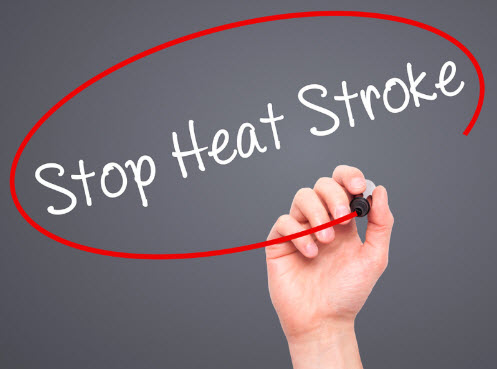Understanding the Differences

Introduction:
Heat exhaustion and heatstroke are two distinct heat-related conditions, both of which can be serious if left untreated. While both conditions are caused by prolonged exposure to high temperatures, it is crucial to understand their differences to properly assess the level of medical intervention required. In this blog post, we will explore the distinctions between heat exhaustion and heatstroke.
- Heat Exhaustion: Heat exhaustion is often a precursor to heatstroke and is considered a milder condition. It occurs when the body overheats and cannot naturally regulate its temperature. Symptoms include excessive sweating, rapid heartbeat, dizziness, muscle cramps, and nausea. Heat exhaustion can typically be treated with prompt attention, first aid measures, and a cooldown in a cooler environment.
- Heatstroke: Heatstroke, on the other hand, is an advanced and life-threatening condition. It develops when the body’s internal temperature rises above 104°F (40°C) and the thermoregulatory system fails. Unlike heat exhaustion, individuals experiencing heatstroke may cease sweating altogether. Other symptoms of heatstroke include altered mental state, confusion, headache, hot and dry skin, high body temperature, and even loss of consciousness. Immediate medical attention is necessary for individuals suspected of having heatstroke, as it can cause severe organ damage or even death.
Differentiating Factors:
1. Core body temperature: Heat exhaustion typically does not involve a significant rise in core body temperature, while heatstroke is characterized by a core body temperature above 104°F (40°C).
2. Sweating pattern: Individuals with heat exhaustion still sweat, albeit excessively, while those with heatstroke may stop sweating.
3. Mental state: Heat exhaustion typically presents with dizziness and confusion, whereas heatstroke can cause altered mental states, unconsciousness, or seizures.
4. Urgency of medical intervention: While both conditions require attention, heatstroke necessitates immediate medical care due to its life-threatening nature.
Conclusion: Understanding the differences between heat exhaustion and heatstroke is essential for proper assessment and timely intervention. Recognizing the symptoms and severity of each condition allows us to administer appropriate first aid measures and seek urgent medical attention when necessary. Stay informed, stay aware, and prioritize your well-being during hot weather conditions to avoid these heat-related conditions.
